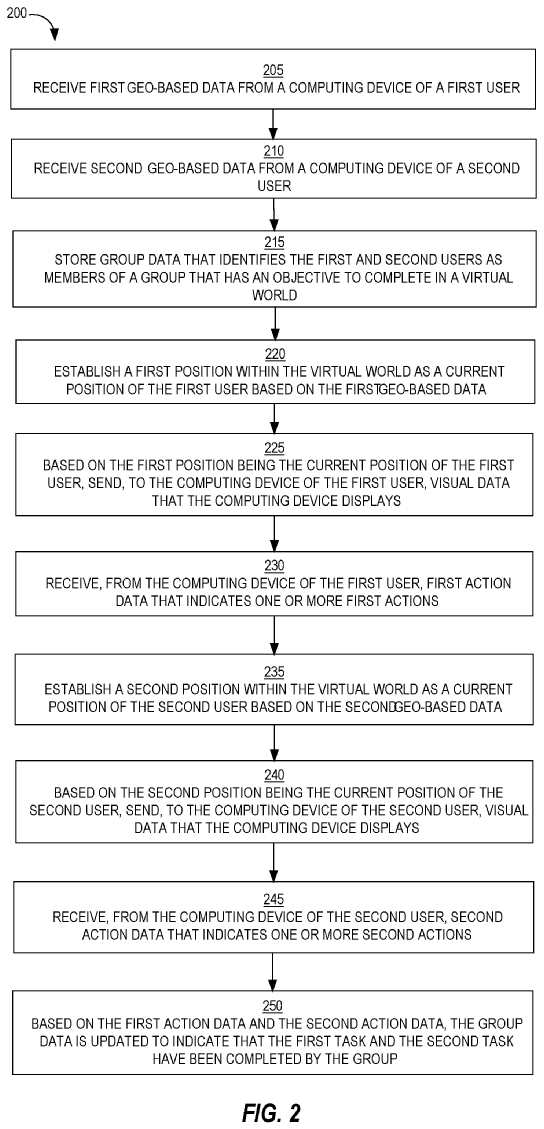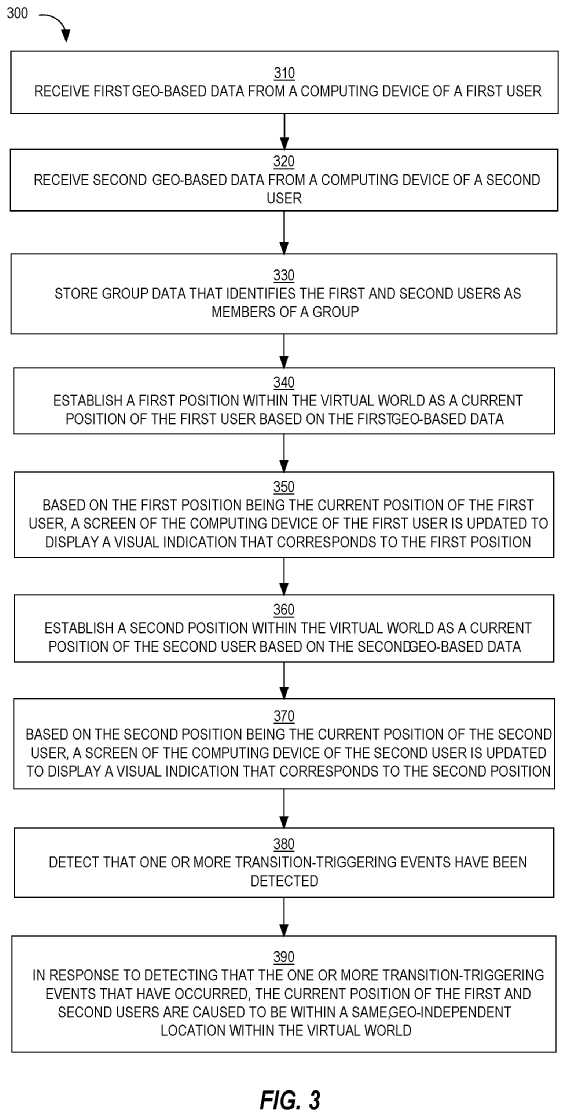
Story Highlights
- Blizzard has patented a new system that will track the location of players to let them complete quests in separate areas but will combine it with fictional settings so they can play together.
- The system will be able to blend both locations so the users can play the entry together with the real-life locations severed and also separately in a dynamic way.
- Currently, only one method at a time has been possible, as noted by the patent. Many trigger events could take place during gameplay that would let users transition between both modes.
- An example implementation includes playing separately to complete objectives in real-life locations for the group but transitioning to play together to take down a boss enemy.
Video games currently can only focus on making your in-game location depend on your real-life area or place you in a fictional setting not coupled with your respective real-life site. While the latter is more common in titles we know and love, combining both these techniques is not something games have explored in the past. Regardless, a new patent published by Blizzard seeks to blend your real-life spots alongside in-game areas.
The patent dubbed “TECHNIQUES FOR COMBINING GEO-DEPENDENT AND GEO-INDEPENDENT EXPERIENCES IN A VIRTUAL ENVIRONMENT” seeks to explore methods to let the game track the locations of each player individually. After that, each player could be given quests to complete in separate virtual areas that reflect their particular sites. However, it will also let gamers play together in fictional settings accessible to all.
A system allows geographically-dispersed users to work toward a group objective in geo-dependent VE [Virtual Environment] locations that based on their respective real world locations. For example, the system determines a different VE location for each user in a group based on each user’s current real-world geographic location. Each user may perform tasks that further the group’s goals while at their respective geo-dependent VE locations.”
Thus, completing these tasks at players’ varied locations influenced by real-life areas would lead to achieving the objective. Blizzard argues that this objective could trigger “a change from interacting with the system in a geo-dependent mode to a geo-independent mode,” which means that the link between the real-life locations and virtual location is broken. The players will be able to meet up and play or join together.

Regardless, there can be many variables and differences in the system by Blizzard. For instance, an opposite approach could be included in the entry where first, gamers play together to complete an objective but then have to part ways after the entry connects the gamers’ real-life locations and virtual locations together.

The transition event, meaning the change between both modes, can vary based on different objectives. For instance, it could be immediate and start soon after completing an objective, such as killing five spider enemies. Moreover, it could be entirely different and may require a time-based event to complete, such as killing a boss in a limited amount of time to trigger the transition event.
Examples of events that trigger a geo-dependent to geo-independent transition include, but are not limited to, completion of a group objective, arrival at a certain location within the VE, activation of an object in the VE (e.g., entry of a portal), multiple members of a group concurrently attacking the same type of enemy, etc.”
The patent by Blizzard argues that using only one method, for instance, focusing on the real-life location of each player causes minimal interactivity between the users. Since the users are unable to gather and play together. On the other hand, playing together in fictional environments not based on separate real-life locations diminishes the unique aspect. Moreover, “real-world movement/travel does not play a role in the gameplay.”
Hence, combining both these approaches will make games a more dynamic in-game experience by letting users play together as well as managing separate gameplay based on real-life locations. Blizzard could implement the system in its upcoming games or existing popular entries. It is also possible that it may not be integrated and only remain on the legal documents.
Blizzard has published a variety of exciting patents over the past years, proving to be a major innovator in the industry. For instance, it patented an eye-catching system to calculate user ranks in games. It is also exploring ways to automatically populate in-game maps with props by placing them using machine learning.
Similar Reads: EA Gets Called Out For Not Individually Crediting Translators In Jedi Survivor.
Thanks! Do share your feedback with us. ⚡
How can we make this post better? Your help would be appreciated. ✍



